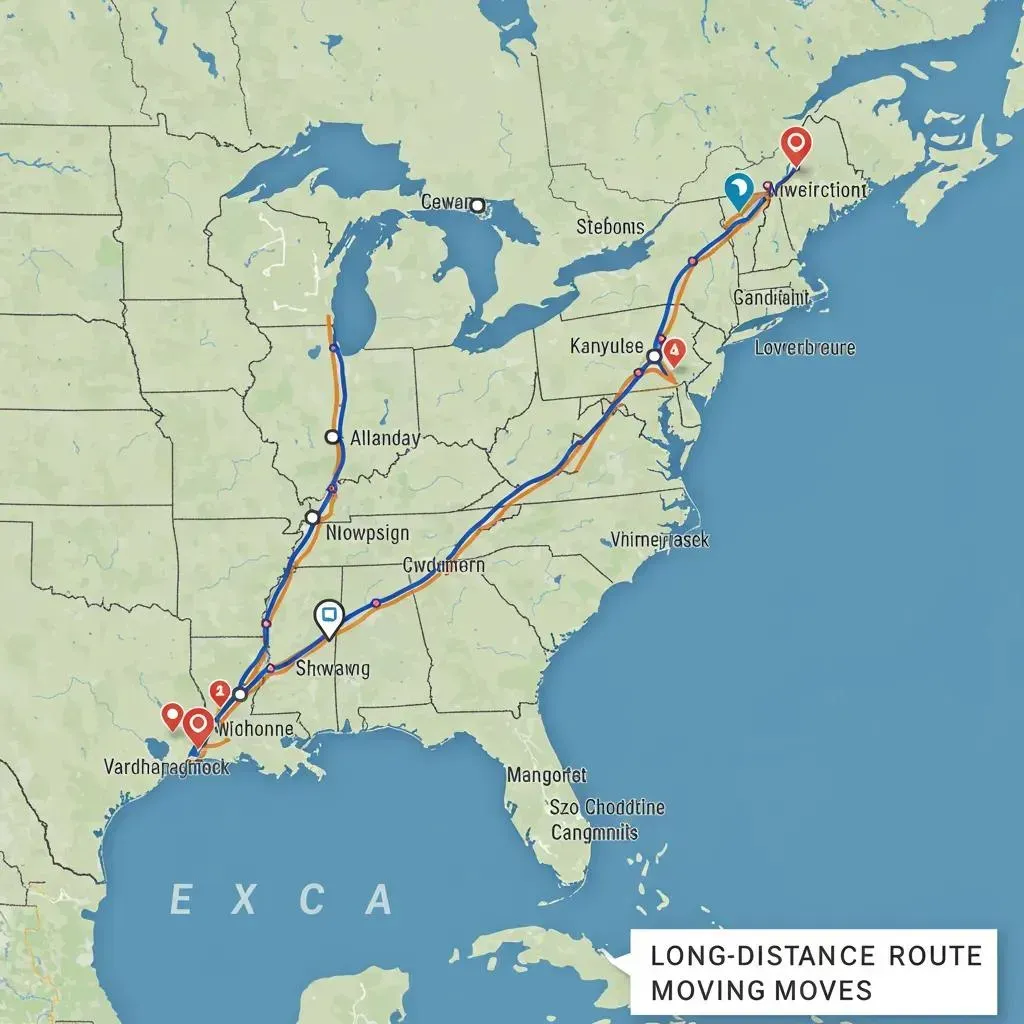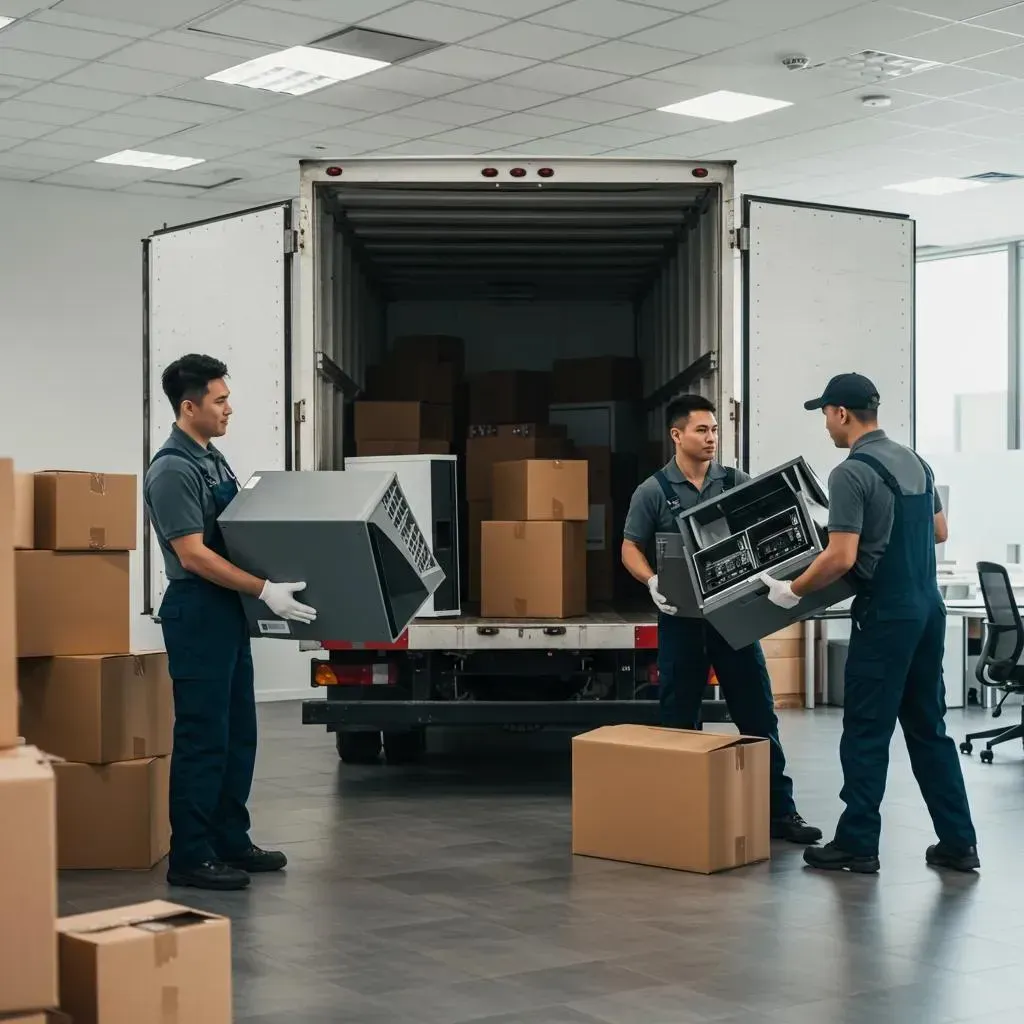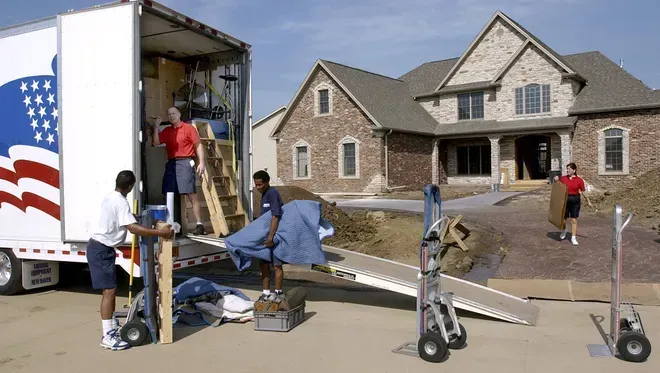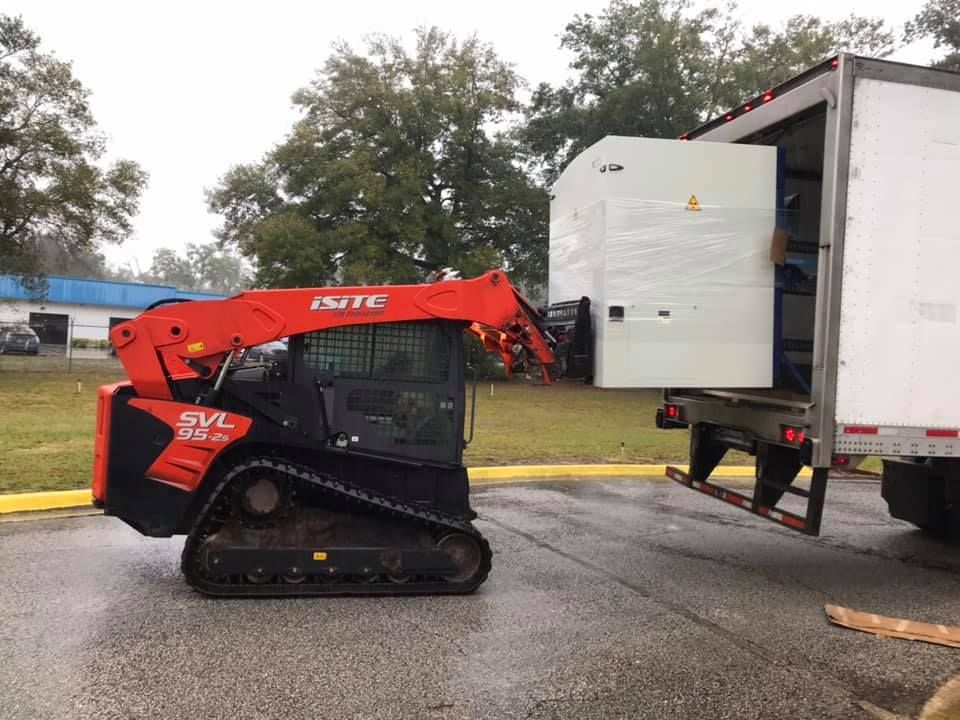BLOG
We Earned Their TRUST...
Now, Let Us Earn Yours!
Local vs. Long-Distance Movers: What’s the Big Difference for Your Move?

Moving can feel like a puzzle, especially when you’re trying to figure out the key differences between local and long-distance moving companies. But here’s the thing: picking the right service can seriously impact your wallet, your timeline, and your stress levels. Whether you’re just moving across town or heading to a new state, understanding how things like distance, service scope, pricing, rules, and planning timelines stack up will help you make a smart choice. This guide will break down what local versus long-distance moves really mean, compare their services side-by-side, dive into costs, cover important legal and insurance stuff, outline different planning strategies, and show you why MOVE IT ALL’s full-service approach makes for a seamless move. By the end, you’ll have the know-how and confidence to get a custom quote for your next relocation.
What Exactly Is a Local Move vs. a Long-Distance Move?
A local move is pretty straightforward: it’s a relocation within the same state or metro area, usually under 100 miles, and typically charged by the hour. This means you can often get quick scheduling, flexible timing, and easy on-site coordination, perfect for city apartments or nearby neighborhoods. A long-distance move, on the other hand, crosses state lines or goes beyond 100 miles. These moves are priced based on weight and distance, and they involve a lot more complex planning, like figuring out routes, permits, and overnight stops. Knowing these differences upfront helps you match your needs—like how much packing you need, your timeline, and your budget—with the right kind of mover.
The main things that set these moves apart are how they’re priced, how long they take, the rules they follow, and how your stuff is handled. Local moves usually have simple hourly rates and shorter transit times. Long-distance moves often involve weight-based estimates, fuel surcharges, and carefully coordinated loading schedules. Understanding this basic difference explains why some companies focus on one type of move or both, and it sets the stage for digging deeper into boundaries, timing, and official definitions.
What Are the Geographic Lines for Local and Long-Distance Moves?

Local moves happen entirely within a state’s boundaries or a specific metropolitan area, generally covering less than 100 miles from start to finish. Interstate or long-distance moves go beyond that distance and often cross state lines, which means federal regulations come into play. Metropolitan zones can include city centers and their surrounding suburbs, while a move under 100 miles in a rural area still counts as local if you don’t cross a state line. Local moves usually mean fewer paperwork headaches and faster transit, while interstate moves require careful route planning and following the rules of multiple jurisdictions.
How Do Timeframes and Logistics Differ for Local vs. Long-Distance Moves?
Local moves are often completed in a single day, with most home relocations wrapped up within 4–8 hours of starting the loading. Your moving crew will coordinate directly with you on departure times, traffic, and when to arrive at your new place. Long-distance moves can take several days or even weeks, depending on how far you’re going, traffic on the routes, and when the transport trucks are scheduled. The logistics for longer hauls involve using cross-dock facilities, multi-leg trucking schedules, and real-time tracking to make sure your belongings stay safe throughout the entire journey.
What Are the Official Rules and Regulations for Each Type of Move?
Local moves are overseen by state and city authorities, with licensing and insurance rules set by each state’s Department of Transportation. Long-distance moves are under federal jurisdiction and must comply with FMCSA and DOT regulations, including carrier authorization, rate filings, and proper bill-of-lading paperwork. State-level rules often focus on consumer protection notices and bonding, while federal rules require specific valuation options and standardized ways to handle disputes.
How Do Service Offerings Differ Between Local and Long-Distance Moving Companies?
Both local and long-distance moving companies offer the basics—packing, loading, moving, unloading, and unpacking—but the scale and complexity can be quite different depending on the type of move. Local movers focus on quick turnarounds, flexible staffing, and direct door-to-door service without needing intermediate storage. Long-distance specialists use more advanced packing methods to protect items during transit, coordinate storage-in-transit solutions, and employ specialized equipment for longer journeys. Here’s a closer look at what’s typically included.
Before we get into the specifics, remember the big advantage of full-service movers: they handle every part of your move, cutting down on risks and freeing you from the logistical headaches. This approach holds true whether you’re moving just a few blocks or across the country.
| Service Component | Local Moves | Long-Distance Moves |
|---|---|---|
| Packing & Unpacking | Partial or full packing, usually done the same day | Full-service crating for delicate items, requires several days’ notice |
| Loading & Unloading | One crew, scheduled by the hour | Multiple crews for staging, timed cross-dock operations |
| Transportation Equipment | Local trucks, direct transport | Long-haul tractor-trailers, lift gates, air-ride suspension |
| Storage Solutions | Local storage available on short notice | Storage-in-transit with climate-controlled options |
| Specialty Item Handling | Standard handling procedures | Custom crating and packaging to prevent damage |
What Packing and Unpacking Services Are Included in Local vs. Long-Distance Moves?
Local moving services typically include standard full-service packing with regular boxes, bubble wrap, and protective padding, all completed in one day. Moves over 100 miles often require more advanced crating techniques, special boxes for fragile items, and a phased packing schedule to align with multi-leg transport. Long-distance packing usually involves pre-move assessments, detailed inventories, and reinforced containers for valuable items.
How Do Loading, Transportation, and Equipment Vary by Move Type?
Local movers use standard moving vans and crew rotations designed for speed. Long-distance fleets, however, use tractor-trailers equipped with lift gates, air-ride suspension, and secure fastening systems. For long-distance moves, crews often include dedicated move coordinators and route managers who oversee every step from loading at your origin to final delivery, ensuring consistent handling practices across different areas.
What Storage Solutions Are Available for Local and Long-Distance Moves?
Short-term local storage offers options for same-day or overnight holding facilities near your current home, often used when your new place isn’t quite ready. In contrast, long-distance moves can include storage-in-transit at secure, climate-controlled warehouses, which helps coordinate timing smoothly when delivery dates shift. This layered approach ensures your belongings are kept safe until they’re finally unloaded.
How Are Specialty Items Handled Differently in Local and Long-Distance Moves?
For local moves, handling items like pianos, antiques, and fine art typically involves padded dollies, protective floor coverings, and teams of two movers. Long-distance moves for specialty items often require custom crates, shock-monitoring devices, humidity-controlled packaging, and specialized freight carriers to minimize risks during extended transit.
What Are the Cost Differences Between Local and Long-Distance Moving Services?

Local move pricing is usually based on hourly rates that cover labor, truck use, and basic supplies, leading to predictable invoices for moves within a state. Long-distance moves calculate costs based on the weight of your shipment, the total miles traveled, and extra fees like fuel surcharges, guaranteed estimate options, and handling for special items. Understanding these different pricing models helps you estimate expenses accurately and avoid unexpected charges.
Hourly billing for local moves encourages efficiency, while weight-and-distance estimates for long hauls reward careful packing and accurate item lists. Both methods require clear communication with your mover to confirm the type of estimate—binding, non-binding, or guaranteed maximum—and all associated terms.
| Cost Element | Local Moves | Long-Distance Moves |
|---|---|---|
| Pricing Model | Hourly rate | Weight-based rate per mile |
| Estimate Type | Non-binding or flat hourly quote | Binding, non-binding, or guaranteed maximum price |
| Typical Range | $90–$150 per hour | $0.50–$0.80 per pound per mile |
| Common Additional Fees | Overtime labor, parking permits | Fuel surcharges, storage-in-transit, liability coverage |
How Are Local Moving Costs Calculated Compared to Long-Distance Moves?
Local moves calculate costs by multiplying the crew’s labor hours by the hourly rate, plus materials, parking permits, and any potential overtime. Long-distance moves require an accurate weight of your shipment, rates based on distance, and any additional fees for services like crating, carrying items up stairs, or shuttle services.
What Are Binding and Non-Binding Estimates and How Do They Affect Pricing?
A binding estimate locks in the quoted price, no matter the final weight or time, protecting you from unexpected increases. A non-binding estimate, however, can change based on the actual shipment details, meaning the final cost could be higher or lower than initially estimated. A guaranteed maximum price estimate sets a ceiling on your cost, offering a middle ground between a fixed price and an estimate.
What Hidden Fees and Additional Charges Should You Expect?
Potential extra charges for local moves can include fees for carrying items up stairs, long walks from the truck to the door, handling bulky items, and elevator use. Long-distance services often add fuel surcharges, tolls for bridges or customs, interstate moving permits, and storage-in-transit fees, all of which should be clearly explained upfront.
How Can You Save Money When Choosing Between Local and Long-Distance Movers?
To cut down on costs, try to consolidate your belongings, schedule your move during less busy times, and handle non-essential packing yourself. For longer moves, book well in advance to get better rates, combine smaller shipments to optimize weight-based pricing, and negotiate binding estimates to cap your total expense.
What Regulatory and Insurance Considerations Should You Know for Local and Long-Distance Moves?
The rules are different for each type of move: local relocations are governed by state DOT agencies, while interstate moves fall under the Federal Motor Carrier Safety Administration (FMCSA). Insurance and valuation options also vary; local movers typically offer basic liability coverage, while long-distance carriers are required to provide several valuation plans. Licensing and compliance protocols ensure your mover meets bonding, insurance minimums, and consumer protection standards in every area they operate.
Understanding these layers of oversight ensures your belongings are properly protected and that you know how to resolve any issues that might arise.
How Do Federal and State Regulations Impact Long-Distance and Local Moves?
Federal regulations apply to interstate moves, requiring carriers to register with the FMCSA, maintain good safety records, and offer specific liability options. Intrastate moves follow state-specific licensing rules that differ by location but generally enforce consumer disclosure and minimum insurance requirements.
What Insurance and Valuation Options Are Available for Each Move Type?
Local moves usually come with basic released value protection, which covers items at a minimal rate per pound, with options to upgrade coverage. Long-distance services offer standard valuation at 60 cents per pound per item and full replacement value plans that cover the cost to repair or replace damaged items.
How Do Moving Company Licensing and Compliance Differ Locally and Interstate?
Local moving companies hold licenses issued by the state and often need registrations with city or county consumer affairs departments. Long-distance carriers must have federal operating authority, a U.S. DOT number, and publish tariffs detailing their rates and services as required by federal law.
How Should You Plan and Prepare Differently for Local Versus Long-Distance Moves?
Planning a local move often means booking movers 1–2 weeks in advance, creating an inventory list, and confirming parking or elevator access. Long-distance relocations require 4–8 weeks of lead time for negotiating rates, filing permits, and scheduling cross-country transit. For long hauls, inventory management benefits from digital tracking tools that assign unique IDs to boxes, while local moves often rely on simple checklists and color-coded labels.
Using technology—from online quoting tools to GPS tracking—makes communication smoother and ensures transparency, no matter the type of move.
What Is the Recommended Timeline for Booking Local and Long-Distance Movers?
Local moves should be booked at least one to two weeks ahead, especially during the busy summer months. Long-distance moves need four to eight weeks of advance notice to secure competitive rates, file interstate permits, and accommodate seasonal demand.
How Does Inventory Management Differ Between Move Types?
Local inventories often list items by room with basic condition notes, while long-distance inventory systems use digital scanning, weight verification, and itemized tracking to meet federal manifest requirements. This level of detail helps reduce disagreements about what was moved and maintains liability coverage.
What Are the Best Practices for Preparing Specialty Items for Each Move?
For local moves, wrap pianos, antiques, and artwork in padded blankets and secure them on dollies. Long-distance shipments often require custom crating, climate-controlled wrapping, and shock-monitoring inserts to keep items in good condition through multiple stages of transit.
How Does Technology Enhance Planning for Local and Long-Distance Moves?
Digital quoting tools speed up estimate generation for both types of moves, while GPS tracking provides real-time updates for long hauls. Mobile apps let you review inventories, approve invoices, and communicate directly with move coordinators, increasing transparency and reducing uncertainty.
Why Choose MOVE IT ALL for Your Local and Long-Distance Moving Needs?
MOVE IT ALL excels at complete residential relocations, making your moving experience stress-free with full-service packing, secure storage, and customized coordination for both local and long-distance moves. Our expert crews are trained in careful handling, advanced transit procedures, and proactive customer support, ensuring every detail—from the initial assessment to the final unpacking—is managed with precision. Our residential moving services combine packing expertise, climate-controlled storage, and flexible scheduling to guarantee your belongings receive top-notch care, no matter the distance.
When you choose MOVE IT ALL, you get clear estimates, dedicated move coordinators, and a commitment to care and efficiency that you can count on. Request a personalized quote today and enjoy peace of mind on your next move.
What Full-Service Solutions Does MOVE IT ALL Offer for Both Move Types?
MOVE IT ALL provides everything from packing and unpacking to padded transport, secure storage-in-transit, specialty item crating, and final setup assistance—ensuring smooth transitions whether you’re moving across town or across the country.
How Does MOVE IT ALL Ensure a Stress-Free Moving Experience?
Our dedicated move coordinators manage every detail, from custom packing plans to real-time transit tracking. Our trained crews use gentle handling techniques and maintain proactive communication to keep you informed every step of the way.
What Are Customer Success Stories Demonstrating MOVE IT ALL’s Expertise?
Families moving locally rave about MOVE IT ALL’s punctual hourly service and respectful handling. Interstate clients praise our binding estimates, storage solutions, and on-time deliveries that ease the complexities of long-haul moves.
How Can You Request a Quote and Get Started with MOVE IT ALL?
Contact MOVE IT ALL’s residential relocation team to schedule a free in-home or virtual survey, receive a clear binding estimate, and confirm your moving date—setting the stage for a seamless door-to-door transition.
What Are the Most Common Questions About Local Versus Long-Distance Moving?
This quick guide clarifies common questions people have when comparing local moving logistics with planning an interstate relocation. Each answer breaks down technical details into practical advice to help you decide which type of move best fits your priorities—whether you’re looking for same-day flexibility, budget predictability, or comprehensive end-to-end protection.
What Is Considered a Local Move Versus Long Distance?
A local move is under 100 miles within state lines and is billed hourly. A long-distance move is over 100 miles or crosses state borders, priced by weight and distance.
Is It Cheaper to Move Locally or Long Distance?
Local moves are generally less expensive due to shorter distances and hourly rates. Long-distance relocations include fuel, labor, and logistics surcharges, making the overall costs higher on average.
Do Local Movers Provide Packing Services?
Yes, local movers often offer full or partial packing services with same-day completion, using standard boxes, wraps, and protective padding.
How Far Is a Long-Distance Move?
A long-distance move typically covers more than 100 miles or crosses state boundaries, requiring federal carrier oversight and coordination for multi-leg transport.
What Is the Difference Between Interstate and Intrastate Moving?
Intrastate moves stay within one state under state DOT rules and insurance requirements. Interstate moves cross state lines, follow federal FMCSA regulations, and offer standardized valuation options.
Successfully moving depends on matching your needs with the right mover: local companies are great for quick, flexible moves, while interstate experts provide structured, weight-based transit solutions. By understanding these core differences and trusting MOVE IT ALL’s full-service expertise, you can ensure a smooth, cost-effective, and stress-free journey—whether you’re moving across town or across the country.













